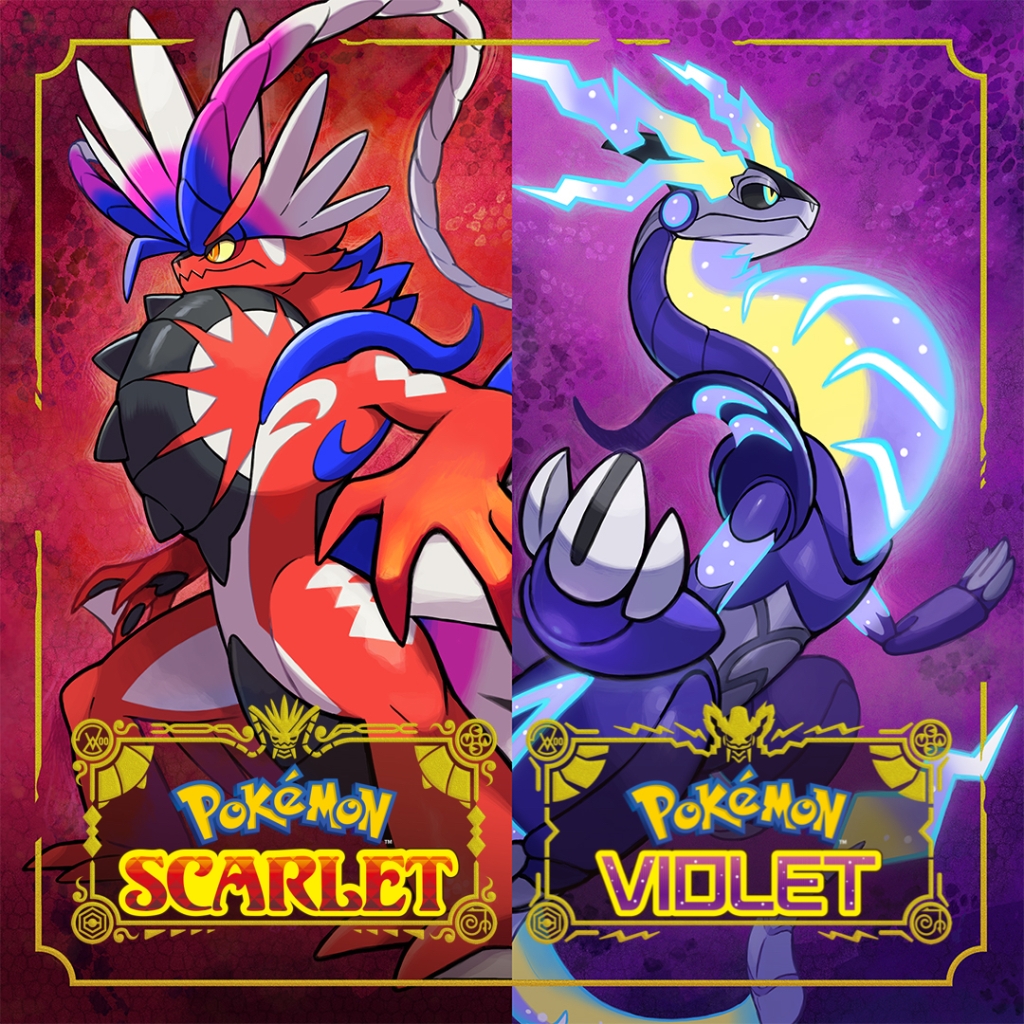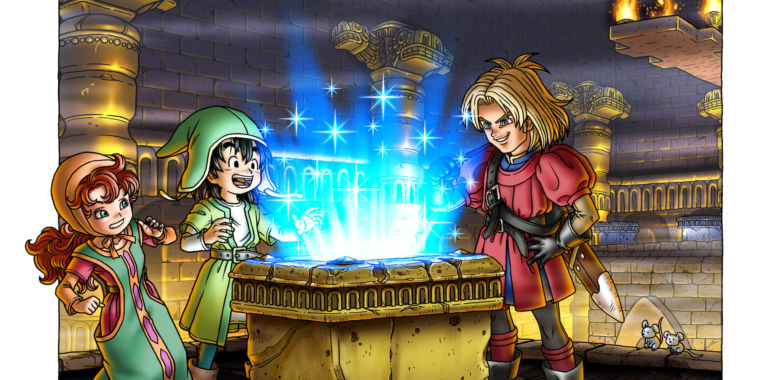I’ve talked about the Pokémon franchise a lot. Both in anime form and in terms of the games. And why not? It was part of my childhood and it’s a franchise I still regularly revisit for relaxation. Except Sword & Shield as they were rubbish. But let’s look at the latest main instalments. Like with Sword & Shield, I’m not going to discuss Gamefreak’s lazy and consumer unfriendly decision to leave certain Pokémon out of the game. I will however be discussing the sorry state of the games at launch. Let’s get started.

Story:
We open with our protagonist moving to the Paldea region and beginning their new life at The Pokémon Academy. After a brief introduction, our young hero is set loose on a treasure hunt which has them challenging gyms, raiding bases of the seemingly delinquent Team Star and chasing down massive Titan Pokémon for mysterious herbs.
The story in this instalment is actually among the best in the franchise. If not the actual best. All three story arcs are really compelling and feature unexpectedly tragic elements that add some serious depth. They also each have their own climaxes and they come together in a really strong way for the game’s finale.
Characters:
This title has some of the strongest characters in the franchise’s history as well. You have Nemona in the gym challenge, Penny in the Team star story & Arven in the Titan hunt. I’ll be completely honest. At the start, I didn’t much like any of them as characters. They all seemed kind of flat but the game does an excellent job of slowly peeling back that superficial impression and showing you the hidden motivations and layers of the characters.
Nemona, for example, starts out looking like an over-eager battle maniac. However, as you progress it becomes clear that she wanted you to love battling and rise to become a formidable trainer because she feels stifled by success. There isn’t anyone around who can give her a good challenge and that’s gradually causing her to become disinterested in something she used to love. Which is a very interesting take on a strong trainer and a compelling way to tackle burnout. Arven and Penny likewise have some highly interesting layers hiding beneath your initial perception of them. Which I wasn’t anticipating because Pokémon characters are usually exactly what they appear to be.
Gameplay:
Let’s begin with the big aspect that needs to be discussed. The state of the game at launch. This game started out with a lot of bugs, glitches, lag issues (even when playing offline) and crashes. We may live in a world where that isn’t uncommon. Where, in fact, games are frequently released in an incomplete state and patched into a more playable framework. For me, this is still unacceptable. Being able to patch games post-launch does not give companies carte blanche to half-ass their releases.
That isn’t the only issue with the gameplay. The open world may be a good idea but they didn’t execute it well. The issue being that the levels of trainers, Titan Pokémon, & Team Star bases are all stagnant. They don’t change based on where you are in the game, how much you’ve completed or your level. What that means is if you start out going to the right of the Academy and clear out a bunch of events there and return to the left side later, the left side will be far too easy unless you want to completely change your party. Which happened to me. I went right at the start and by the time I headed left I could beat anything in one hit. On the opposite end, you can also go too far while exploring and wind up facing opponents who are virtually impossible. This also happened to me. I nearly got wiped by a trainer with a single Pokémon because it was twenty some levels higher than anything I had.
The game also removed the convenient GTS system where you could deposit a Pokémon for trade and someone could take the trade at any time. Which made it so much simpler to get trade evolutions since you could just put in a Machoke, request a Machoke and both you and your trade partner would get Machamps. Some of the new Pokémon also have really annoying evolution methods. There are multiple monsters that evolve from taking steps while walking with you which is just time consuming. The worst, however, is Gimmighoul. Gimmighoul is basically a mimic Pokémon, if you’re dealing with a really ugly mimic. To evolve it you have to find 999 Gimmighoul coins around the map. What makes it more insulting is that its evolution is bloody hideous. It looks like the mascot for tearaway cheese but you have to get it on your Pokedex if you want to complete it and get the shiny charm.
Let’s move on to the positive aspects. First of all, being able to see the Pokémon wandering around on the map is still a positive improvement. I also really like the movement mechanic of having this legendary Pokémon you use as a mount and helping it regain abilities in order to traverse various areas. It’s a good way of blocking player access to certain areas until they’re ready without resorting to something annoying like HMs. The way they do TMs in this is also a better compromise between giving them unlimited uses and just having them break than they’ve done before. What they do is give you the ability to make TMs using items you find and LP. So, you can make whatever TMs you want so long as you’ve had the TM in question. Though I still would prefer to just have unlimited uses like they did in Sun/Moon. I also appreciate the game giving you prizes throughout for Pokedex completion. It makes it more immediately awarding to go through the whole process of catching them all than just doing the whole thing and hoping they’ll give you a prize after. The whole lecture and testing process at the Academy is also a nice touch. It’s like an optional tutorial that offers you rewards for doing it and doesn’t take up too much time.
Then we have the Terastal mechanic. Honestly, it might be the best new game gimmick the franchise has had in a long time. The way it works is that you can use your tera orb once per battle to change a Pokémon into a specific type, at which point it looks like a crystalline figure, and give it extra damage when using moves of that type. What makes it interesting is that you can change a Pokémon’s Tera type. For instance, you could take Gyarados and make it a ground type with all the weaknesses and strengths thereof. So, it’s not broken and over-powered like getting three powerful attacks that also give you boosts. Nor is it team limiting like Megas were. It’s a lot more strategic.
Art:
The issue with the art is that the game has a lot of weird graphical glitches. They’re especially obvious if you watch random people in the background and their janky movements but you’ll also notice bizarre perspective. Like, you’ll battle a child trainer and the grass behind them will be taller than they are. It’s also disappointing that you can’t buy cute outfits for your trainer. You can buy hats, gloves, shoes, glasses, socks and bags but you don’t get shirts, skirts, trousers. Instead you’re stuck with one of four school uniforms. I miss Sun and Moon where you could change your outfit daily and find all kinds of interesting outfit pieces in the shops.
There are some positives. First off, the important trainers (Elite Four, Gym Leaders, Important NPCs) all look really good and unique. Even if they are a little pandering with characters like Iono, the gym leader who streams. Her design is still fecking adorable. The opening character customisation for hair colour, eye colour and hair style is also really good. The Pokémon models have some very nice details. Unlike Sword/Shield, these ones actually look like they’ve been updated and not just lazily imported from the prior generation. The Tera effect is also really nice looking. Like I said, Tera Pokemon look like crystalline figures with little added flair for the tops of their heads. The animation to Tera is also fairly quick and clean unlike the overblown Dynamax animation.
Sound:
The music is pretty solid. It can get a bit repetitive during longer gaming sessions. While there is some unique music for gym battles and such, you’re going to hear a lot of the same music for travelling, wild battles, random trainer battles and such.
Areas of Improvement:
- These games never should have released in the state they did. If Gamefreak needed an extra month or two to get everything fixed, they should have pushed back the release date.
- The game needed the GTS system in place. Especially if they’re going to keep the whole trade evolution mechanic.
- The game needs a proper open world with scaling difficulty.
Final Thoughts:
For me, the state of the game on release definitely hurts it. The big question is how much does the game itself make amends for that huge misstep? Well, it has one of the strongest stories in the franchise and some of the best characters. It also does take some steps forward and some notable steps backward as well. I would still say these are good games. They’re also a bit disappointing because they could have been masterpieces. With more development and features this could have been one of the best generations. But it released incomplete, suffers from a lack of GTS, improperly executed open world and lack of outfits. I’m still going to give them a 7/10 for everything they do get right. I just really would have liked the effort that went into the story and characters to have translated into effort put into programming.







